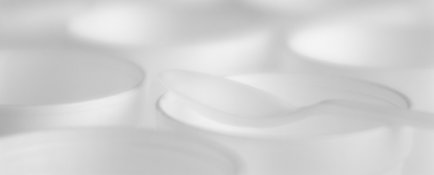For those of you who do still life setups, how do you set them up and what sort of subjects do you shoot?
I don't find it especially easy to say to myself "I want to shoot still-life, now what shall I use as a subject?" For me the best results are mostly from seeing something and being inspired by it, or sometimes seeing a particular light effect and thinking of something that would look good in that light. Sometimes I will shoot one subject and then feel inspired to do a series on a theme, but often it will be a case of just one subject and then nothing till inspiration strikes again, maybe later the same day, maybe not till the next month.
I use a lot of hot lights and nearly 20,000Ws of flash, but many more than half of my 'artistic' still-life shots are lit by natural light. Sometimes the light at a particular time of day gives me an idea and I set something up and wait for the same light to return the next day - sometimes the weather keeps me waiting for days. The smaller the subject, the more likely I am to use artificial light.
The actual subject might be anything, but small tools and household objects, flowers and vegetables have particular appeal to me. I'm also very fond of the effects of decay - I love a flower arrangement when the petals have started to fall.
How the subject is 'set-up' varies enormously, depending on what the subject is, how I want to arrange it (crucially), the angle I want to shoot from, and what the light is and what direction it comes from. Some things can be shot on a copy stand or with my 4x5 Polaroid copy camera, some are done on a translucent sweep. Others are stood on boxes or small tables with a fabric or paper backdrop behind them, or are on a 30" high dining table with a roll of (usually dove grey) seamless swept out onto it. Some subjects are backlit by putting them on, or above, a lightbox. Some must be done in a particular room of the house because only there do I get whatever light it is that I want. (A couple of laboratory jacks are very useful.)
All this limitless choice is part of the challenge, and so also part of the pleasure.
For you LF'ers who do still life setups, are the logistics of shooting still lifes difficult?
In some ways LF cameras make things easier. The complexity in a still-life tends to revolve around the lighting, arranging and supporting the subject, and the background. The movements I get with a view camera, the ability to control the plane of focus, and the continuously variable scale of reproduction can make the logistics easier than using a smaller format camera with a more fixed relationship between lens and film-plane. Shallower DoF is of course relevant, but then choice of how much DoF one wants is a key driver in choosing which format to use anyway.
What a view camera does do is tend to increase the amount of space you need - for the camera and possibly to work round it. With 10x8 you may end up with a lot of bellows draw, and that makes the camera very 'big' and may mean you have to move bodily back and forth between the lens and the back. As long as you have the space though, this just adds a bit of time to the process, it doesn't really make it any more difficult. (Other factors do that for you!)
Do you shoot larger still lifes because of the larger format?
In a way, yes. I shoot the largest proportion of my still-life on 6x9. (A rollfilm holder on a Horseman rotary back on an Arca 4x5 Monolith is my favourite way of working, a smaller and
much lighter Arca 6x9 is what I use most often away from home or on my all-too-lightweight copy stand.) With 6x9 I will not often shoot as still-life anything smaller than about lifesize (more enlargement than that and somehow I am not shooting still-life anymore, the aesthetic seems to change.) With 4x5 I won't often (for DoF reasons as well) go beyond about half lifesize, and the same rough rule of thumb applies to 10x8. In the other direction, no subject is 'too big' for any format. So in a sense the larger format is making me choose larger subjects, but it is really more determind by magnification, DoF, and the size of the subject on the final print than by any feeling that certain formats require certain size subjects.
Sorry if this is a confusing question.
Less confusing than my answers probably were!

Anyway, still-life can be immensely satisfying: enjoy it.
Peter





 )
) ) and I agree with Scott. Composing and lighting the work is about 95% of the work and viewing the composition on a ground glass as opposed to a viewfinder is great to work with.
) and I agree with Scott. Composing and lighting the work is about 95% of the work and viewing the composition on a ground glass as opposed to a viewfinder is great to work with.


 ) You may have an advantage in necessarily coming back to the same basic arrangement again and again; this helps enormously with the learning curve if it also suits your temperament.
) You may have an advantage in necessarily coming back to the same basic arrangement again and again; this helps enormously with the learning curve if it also suits your temperament. 
